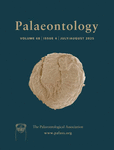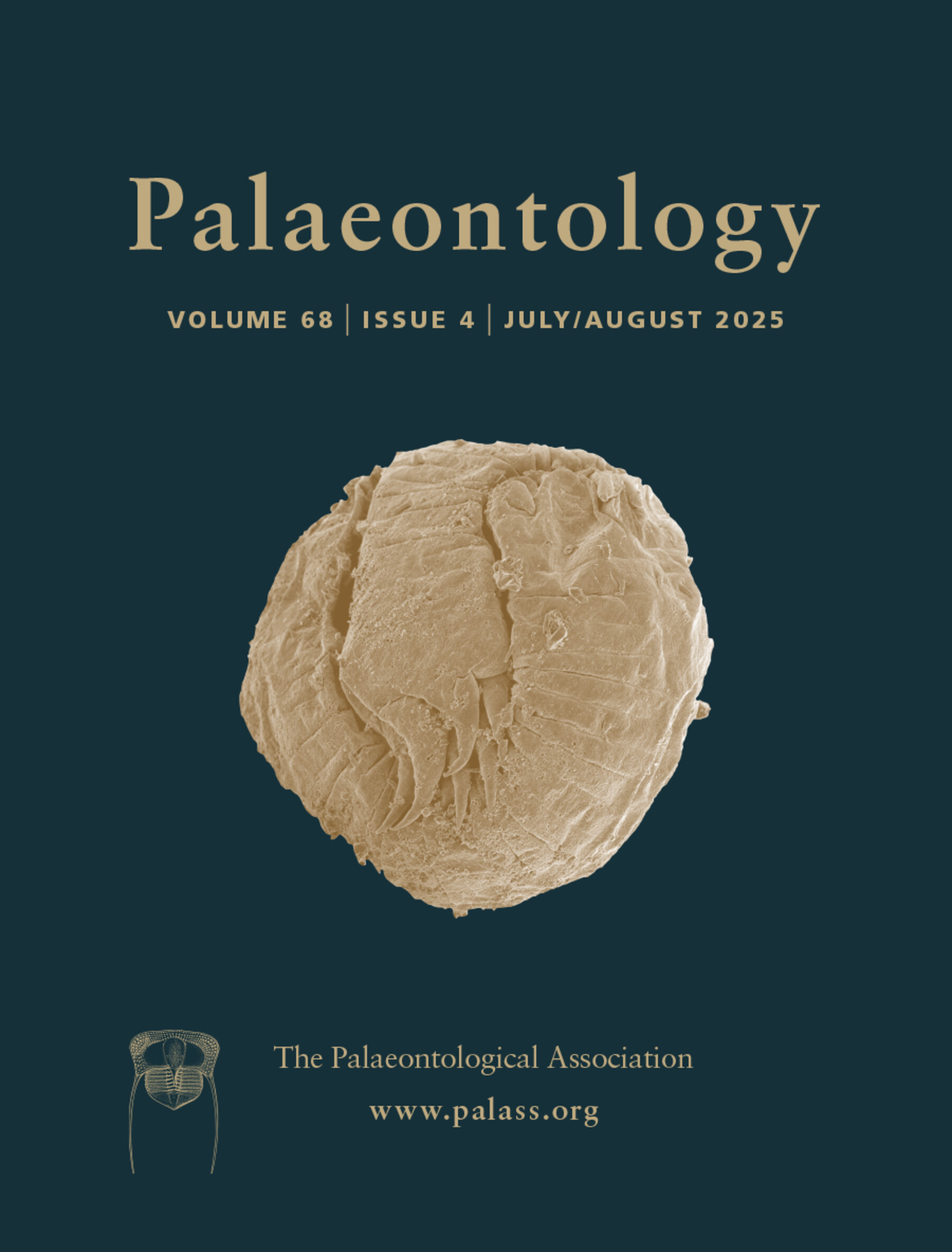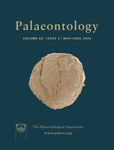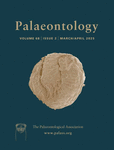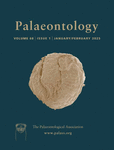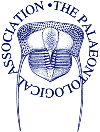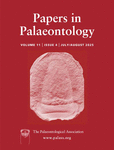Edited By: Prof. Mike Benton
As an official journal of The Palaeontological Association, Palaeontology includes innovative and timely hypothesis-driven research that significantly advances our understanding of the history of life on Earth.
Our scope includes palaeozoology, palaeobotany, systematic studies, palaeoecology, micropalaeontology, palaeobiogeography, functional morphology, stratigraphy, taxonomy, taphonomy, palaeoenvironmental reconstruction, palaeoclimate analysis and biomineralization studies. Synthetic papers that span several of these areas are particularly welcome.
Journal Metrics
- 4.7CiteScore
- 2.3Journal Impact Factor
- 38%Acceptance rate
- 28 days Submission to first decision
Articles
Negative ontogenetic allometry of cardinal spines in the early Cambrian arthropod Isoxys volucris indicates their defensive function
- 28 July 2025
The conundrum of taxonomic uniformitarianism in planktic foraminifera
- 27 July 2025
How femoral morphology informs our understanding of the evolution of ornithopod locomotion and body size
- 23 July 2025
The role of substrate in determining the dominance of immobile, epifaunal bivalves in the Late Cretaceous
- 16 July 2025
Convergent evolution among non-carnivorous, desert-dwelling theropods as revealed by the dentary of the noasaurid Berthasaura leopoldinae (Cretaceous of Brazil)
- 10 July 2025
The modular organization of the trilobite head in Ceraurus pleurexanthemus
- 3 July 2025
Middle Pleistocene revelations: unravelling taphonomic processes in mammals including Mesotherium cristatum (Mesotheriidae, Notoungulata), Corralito Site, Córdoba Province, Argentina
- 2 July 2025
Written in bones: palaeoclimate histotaphonomic history inferred from a complete Megatherium skeleton preserved in the Atacama Desert
- 27 June 2025
The following is a list of the most cited articles based on citations published in the last three years, according to CrossRef.
strap: an R package for plotting phylogenies against stratigraphy and assessing their stratigraphic congruence
- 379-389
- 18 December 2014
A standard protocol for documenting modern and fossil ichnological data
- 469-480
- 23 May 2018
Cyanobacteria and the Great Oxidation Event: evidence from genes and fossils
- 769-785
- 23 June 2015
Time‐averaging and fidelity of modern death assemblages: building a taphonomic foundation for conservation palaeobiology
- 487-522
- 7 May 2013
There are no results at this time
More articlesUnderstanding niche construction and phenotypic plasticity as causes of natural selection
- Palaeontology
- 8 July 2024
The many ways toward punctuated evolution
- Palaeontology
- 22 October 2024
Down to earth: therian mammals became more terrestrial towards the end of the Cretaceous
- Palaeontology
- 1 April 2025
Recent issues
- Volume 68, Issue 4July/August 2025
- Volume 68, Issue 3May/June 2025
- Volume 68, Issue 2March/April 2025
- Volume 68, Issue 1January/February 2025
Author Benefits
- Early View: Immediate online publication of version of record before release of compiled issue
- Open Access option available: We welcome your Open Access funded articles
- Rapid Publication: 7 weeks from acceptance to online publication
- Dryad Integration: Free upload of associated data
- Annual Best Paper Award: Recognizes and rewards excellence in the field of palaeontology



